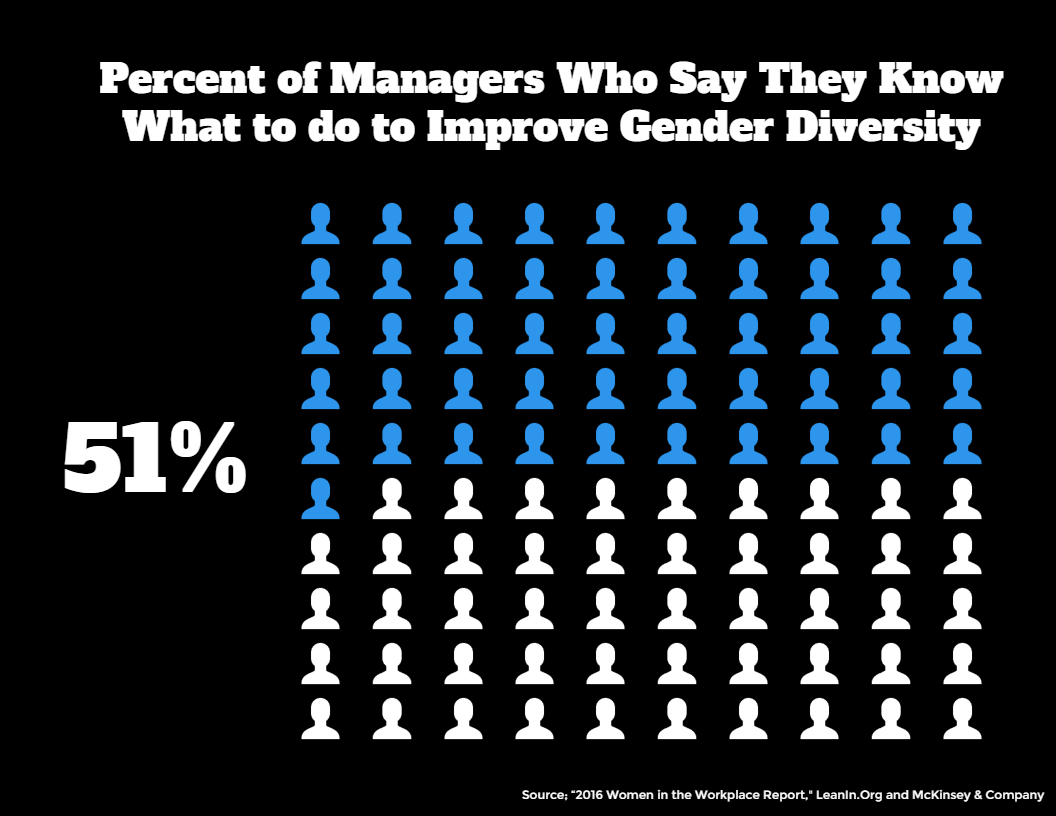A 2016 report jointly published by McKinsey & Company and LeanIn.org found that almost 100 percent of the companies surveyed offer anti-harassment/discrimination training—a good thing. However, the report also found that only 67 percent offer bias-specific training for hiring processes, and only 56 percent offer such trainers for purposes of performance reviews. In light of these numbers, the report states unequivocally, “Bias training is particularly important …When employees don’t understand how bias works, they are less likely to make fair and accurate decisions and push back on bias when they see it.”

So what are law firms doing to combat problems like implicit bias, particularly when it comes to midlevel managers? To answer that question, The Practice interviewed Amran Hussein, a partner in the major international law firm Paul, Weiss, Rifkind, Wharton & Garrison, LLP (Paul, Weiss), who is also the co-chair of the firm’s Diversity Committee, about an innovative program recently rolled out at the firm called Managing Effectively Across Difference, or MEAD. In many ways, MEAD’s purpose is specially geared towards addressing the need for lawyers to better understand bias in the workplace.
Managing Effectively Across Difference
MEAD, which was launched in 2016, is an attempt to promote more inclusive management skills of midlevel and senior associates. According to Paul Weiss, in 2016 nearly 300 mid- to senior-level associates and counsel attended the program. Attendance is mandatory, and those who miss sessions due to work conflicts are scheduled for the next available session. The program will be rolled out for partners beginning this year.
Outlining the impetus for the program, Hussein explains that MEAD arose out of two related issues. First, there was internal demand from Paul Weiss personnel. “Internal feedback from associates, gathered through departmental dinners for women associates, affinity group meetings, and interviews with Associates Committee members,” Hussein says, “stressed the impact that midlevel associates, senior associates, and counsel have on the day-to-day experience and the career development and trajectory of junior associates.”
Second, the firm took notice of the ongoing research that indicates midlevel managers—senior associates and counsel at law firms—are vital to fostering an inclusive work environment, but also frequently lack the skills necessary to do so. Citing the 2016 McKinsey/LeanIn.org study, Hussein explains, “The study found that while half of managers say they have the skills to improve gender diversity, only 24 percent of employees say that their managers know how to challenge gender-biased language and behaviors.”


On a practical level, MEAD is an in-person session that begins, Hussein explains, with the simple proposition that “people do their best work when they feel valued and included.” Prior to the in-person training, participants complete a self-assessment about how they are developing assignments, managing matters, and providing feedback. The session begins with an introduction from a partner, either from the Diversity Committee or the Women’s Initiatives Committee, on the importance of management skills and inclusivity.
The program itself has four components:
- Managing junior associates: opportunities and challenges
- Managers’ roles in giving and managing assignments
- How hidden biases may impact work interactions
- Tips for managing and giving feedback across difference
Each session brings together content on how associates of different genders, races/ethnicities, and sexual orientations experience their work environment—and therein how bias may play out in feedback and assignments. These issues are placed front and center, and are discussed in an open and non-judgmental environment.
People do their best work when they feel valued and included.
Amran Hussein, partner at Paul, Weiss, Rifkind, Wharton & Garrison, LLP
The sessions are also highly interactive, Hussein says. “Participants discuss the research and their own experience,” she says. “They also work through a scenario where a senior associate is giving a more junior associate an assignment that applies the concepts discussed in the session.” Participants also receive tips on how to manage projects more effectively for themselves and their teams.
Feedback matters
Feedback from program participants has been positive, with the majority of attendees expressing that the workshop was useful. “It is always a good sign when participants comment, as several did, that additional time for discussion would have been helpful,” Hussein says. For many, the sessions provided, as one participant says, an “opportunity to speak with others about their experiences and hear feedback from people with different backgrounds … how they perceive the way they are treated in the workplace, and how these perceptions impact their attitude and work.”
A challenge is having discussions of identity privilege with attorneys who may not recognize that such privilege can exist in the workplace.
Amran Hussein
The firm is also studying MEAD’s longer-term effects and whether (and if so how) it is impacting downstream behaviors. Hussein says that focus group data collected six months after the MEAD program’s first session does indicate increased levels of awareness of unconscious bias and in-group preferences—and an increased willingness to communicate and discuss such impacts. However, the program’s efficacy over a much longer term remains to be seen. And partners still need to be brought into the fold (the first cohort will go through the program this year). Nevertheless, there are at least initial signs that the sort of nudges outlined in the lead story of this issue of The Practice are making headway.
Challenges, of course, remain. Hussein notes that “one of the more challenging aspects of the program is having discussions of identity privilege with attorneys who may not recognize that such privilege can exist in the workplace.” As one MEAD participant explains, “The person sitting beside me, when confronted with the chart showing how different the associate experiences are for women and people of color, literally refused to believe it … experienced disbelief and skepticism in the data rather than trying to engage or understand … There was every indication that he was not alone in the room feeling that way.”
Regarding this point, Hussein explains that,
Rather than recognizing that the data is describing their diverse colleagues’ actual experiences, some in the majority attempt to discredit or debunk the data, suggesting that women and people of color are “whining or complaining” or experiencing “isolated incidents.” We have to find a way to instill empathy and understanding for people in the majority or in-group who do not believe that disparities in the quality of work assigned or opportunities to build work relationships continue to exist.
As an example, Hussein reports that during MEAD sessions, several women associates talked about always being assigned the “office housework,” a form of gender bias in assignments. While this observation could be dismissed by peers as an “isolated incident,” when these discussions occur in a systematic way and numerous women across different MEAD sessions are all relating very similar experiences, it “prevents dismissal of the issue.” In this way, Hussein notes, “A new awareness is dawning on participants. These discussions and dialogues are critical to the success of the program because awareness is the first requirement for lasting behavioral changes.”
A wider agenda
Hussein is clear that MEAD is not the panacea for the diversity challenges facing the legal profession. (For a wider-ranging discussion on these issues, see this issue’s “Speaker’s Corner.”) Indeed, research lead by Harvard sociologist Frank Dobbin suggests that when diversity training is a stand-alone effort, it is much less likely to succeed. In this way, “MEAD fits into a broader overall strategy by addressing hidden biases about gender, race, and sexual orientation in the context of developing more-effective management skills in general,” Hussein notes. “But it does not end there. Diversity and inclusion should not be viewed as separate and discreet concepts but rather skills required to become the best lawyer possible, because diverse perspectives, experiences, work styles, and so on are embedded into every aspect of firm life.”
She concludes,
In the same way that everyone benefits from a more inclusive environment, it is also everyone’s responsibility, and MEAD fits into this key tenet. Many diversity and inclusion efforts start with an organization’s senior leadership but fail to penetrate deeper into the management ranks. By starting in the middle of the pipeline, MEAD has been able to impact both the more junior ranks and the more senior ranks, as participants discuss with partners with whom they work what they have gained by having gone through MEAD.



